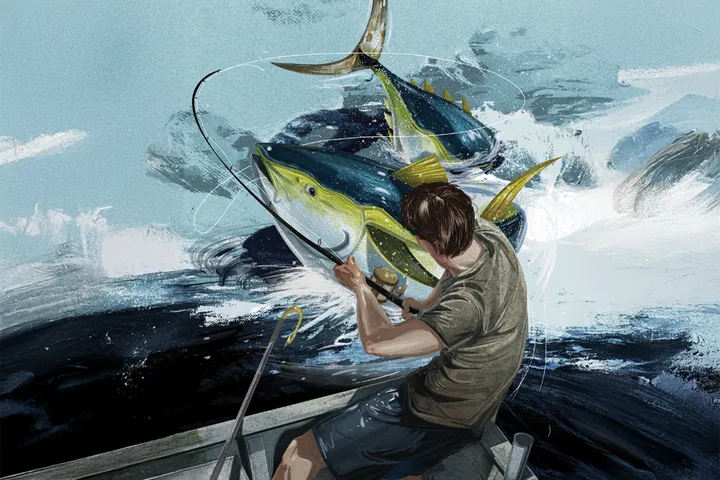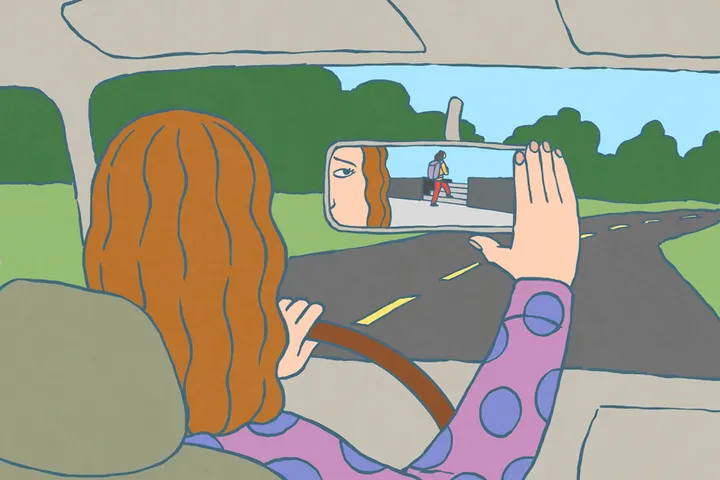I found my daughter sitting cross-legged, surrounded by books on the pink and white rug in her room, carpet fuzz clinging to her pajamas. Weary from a long day of keeping house and parenting children, I watched my youngest stack stories in large piles for our bedtime reading. It was her favorite time of day, the hour when the books woke from their quiet slumber and came alive.

She looked up at me from the floor and, with a pleading look, asked for more than the usual three-book limit. Together, we chose a handful to read, alongside her children’s Bible, and climbed into her bed to nourish our imagination together.
When I became a mother, a new world opened up to me—one I’d missed out on altogether having grown up in a faith tradition that imposed strict rules on the three pillars of children’s literature: myth, mystery, and magic. Memories of my childhood reside firmly in the literal and concrete. My bedtime reads were carefully curated to remain free of the imaginative elements inherent in fairy tales and science fiction. Ancient Norse and Greek mythology sat on library shelves unexplored, and the entire cannon of classic Disney films never flashed across our TV screens.
I learned Santa Claus was a lie some parents told their children. So was the Easter Bunny and the Tooth Fairy. It was a childhood devoid of any outside influences capable of leading me to believe the impossible might be true. A childhood built on fears of the unknowable and suspicions about the nature of imagination.
I learned Santa Claus was a lie some parents told their children. So was the Easter Bunny and the Tooth Fairy.
While discouraging any hint of mystery outside the church, my faith tradition eagerly embraced the work of the Holy Spirit as an active force in everyday life. We placed boundaries around the outside influences of literature and entertainment, while accepting without question biblical stories of an evil serpent who introduced sin into a garden, a woman whose disobedience transformed her into a pillar of salt, and Baalam’s talking donkey—an animal with more sense than his master. We believed in the mystery of blood atoning for sin (Leviticus 17:11), and yet we often vilified any appearance of mystery outside of the Scriptures.
As a child, I stood on a dividing line between what we as Christians considered an acceptable mystery and what we considered sinful sorcery. I learned to fear the unexplainable, the questions, and the unknowns not explicitly revealed in Scripture, while also keeping company with paralytics who walk and a blind man whose mud-smeared eyes miraculously see. These contradictions were born out of fear, and fear provides poor soil for a life of faith to grow. G. K. Chesterton writes in Orthodoxy, “As long as you have mystery you have health …” A healthy faith is impossible without a heart open to wandering down paths that allow a holy imagination to come alive inside of us.
Battling fear requires us to make peace with mystery and lean into questions without the promise of easy answers.
Many of us prefer our God kept in a box where He remains small enough for our minds to grasp. We want explanations and rationalizations. We want black-and-white answers in a world of vibrant color. A holy imagination flourishes when we accept God in His fullness. He will not be constrained by the limits we impose or the boundaries we draw for Him.
Battling fear requires us to make peace with mystery and lean into questions without the promise of easy answers. My daughter models this for me every night as we read tales of wonder and impossibility. Jesus encourages us to approach faith in this same way—trusting, imaginative, capable of believing in a world we can’t see.
Literal-mindedness is death to childlike faith. Without this kind of faith and the ability to prophetically gaze beyond current circumstances, would Moses ever have left Egypt for a promised land? Would King David have stopped being a shepherd? Would Mary have accepted Gabriel’s impossible message? Countless heroes of our faith led lives surrendered to mystery.
These stories show us how mystery leads to a life of risk and adventure—a life of leaning into hard questions. Years ago, I visited a museum displaying a scale model of the known universe. The magnitude of God’s creation and my smallness within it raised questions modern science can’t answer. I felt both awe and fear at the questions it inspired, and I retreated quickly to the gift shop. It felt safer to distract myself with plush toys and snack packs than ponder God’s grandeur.
I’ve learned to start small and face the unanswerable in the safe space of stories. As my daughter and I bathe our imagination in books each night, I see the doorway to faith crack open in the distance. Together, we learn to suspend our disbelief, if only for an evening. Perhaps this is how we embrace the mystery of Christ—one day, one story, one revelation at a time.





